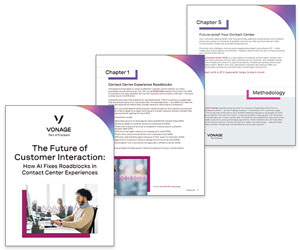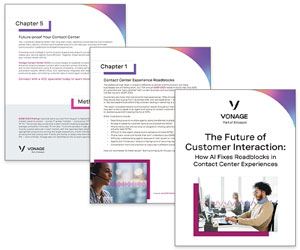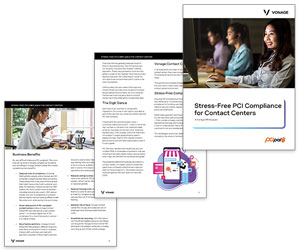Dennis Fois of NewVoiceMedia assesses the impact that the often overlooked IVR can have on the customer experience.
Imagine a technology that promises to help your business but instead is poisoning your customers’ experiences. A technology that has its most deadly effect at the precise moments when your customers need you the most.
A technology so overlooked that it can sap the goodwill from thousands of customers every day without anyone paying attention to it – until it’s too late!
We’ve traced the source of this evil – and it’s COMING FROM INSIDE YOUR BUSINESS!
It’s called interactive voice response (IVR), and the vast majority of companies are using it – but they’re using it to cut costs, not to enhance the customer experience. And you can’t call yourself a business executive today unless you also profess to care deeply about customer experience.
In 2016, Bain & Co. issued research which found that 80 percent of CEOs believed they delivered a “superior experience” to their customers. When their customers were asked, only eight percent agreed with them.
According to PwC, 54 percent of customers in the US in 2018 believed that customer experience needs improvement at most companies.
An IVR that plunges callers into a maze of menus and options is not something that enhances the customer experience. In fact, it sets the stage for a cascade of negative events. An already-irritated customer reaches the wrong agent for their problem, wasting more of the customer’s time.
Also, the agent must attempt to find the right person to deal with the call, which can lead to time spent on hold or a disconnection; the customer leaves the call feeling the business doesn’t care about them; and the agent experience contributes to a desire to leave and increases agent churn.
All these things impose costs – the cost of lost sales and lost customers, the cost of replacing agents, the cost of rebuilding your reputation in order to compete. So ask yourself: what were you thinking when you first implemented IVR?
Were you thinking of making the experience better for the customer? Or were you hoping to divert calls away from your agents in order to save money? Did you think the customer would enjoy negotiating the IVR to achieve his or her goal, or were you looking to reduce your expenses to achieve your own goals?
Did you think the customer would rather not talk to an agent? This may be the case for some simple transactions, but here’s another bit of data from the PwC study: 82 percent of US consumers want more human interaction when they contact the businesses they deal with.
So what role is IVR really playing? Is it saving you money, or is it keeping customers from having the experiences they actually desire?
Some contact centre software vendors today make a selling point out of technology that makes is easier to build IVRs. Why are they committed to making it easier for their customers to do the wrong thing? Why are they so determined to focus their customers on something that erodes CX instead of enhancing it?
Instead of committing energy to planning the various trees of your IVR, use that energy to understand the expertise of your agents. That enables you to create a well-constructed routing plan, which allows you to deliver a great experience: a caller’s number automatically accesses CRM data, and the details of that data are used by the routing system to automatically connect that caller – and their data – to the available agent with the best expertise to help them.
Look at it from the customer’s perspective: The caller hears the phone ring and is quickly connected to a person who knows about them, understands the digital journeys they’ve already been on, and is the company’s best available expert on whatever they’re calling about.
The customer concludes the call happy and satisfied, without having to work through the IVR’s questions. In fact, the technology is all but transparent to the customer.

Dennis Fois
Technology is important, of course – but to connect people, not to keep them apart. IVR is a barrier between customers and the experiences they most want.
If your company really competes on customer experience, there’s no better way to prove it than to put your IVR out to pasture.
Author: Robyn Coppell
Published On: 9th Apr 2019 - Last modified: 8th Aug 2022
Read more about - Archived Content, Vonage

































